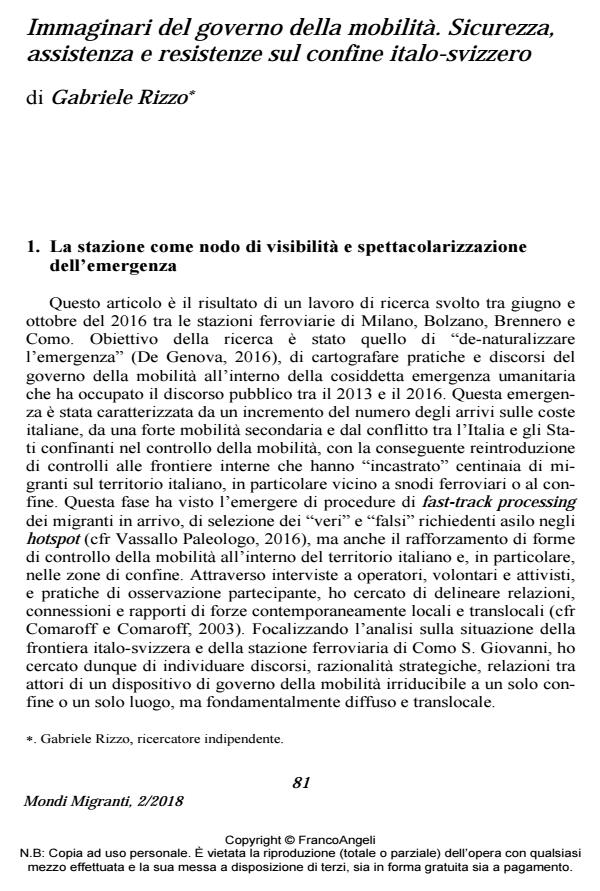Imaginaries of the government of mobility. Security, assistance and resistances on the Italian-Swiss border
Journal title MONDI MIGRANTI
Author/s Gabriele Rizzo
Publishing Year 2018 Issue 2018/2
Language Italian Pages 17 P. 81-97 File size 179 KB
DOI 10.3280/MM2018-002005
DOI is like a bar code for intellectual property: to have more infomation
click here
Below, you can see the article first page
If you want to buy this article in PDF format, you can do it, following the instructions to buy download credits

FrancoAngeli is member of Publishers International Linking Association, Inc (PILA), a not-for-profit association which run the CrossRef service enabling links to and from online scholarly content.
The paper defines some aspects of the border as a political technology for the selection and governance of mobility, identifying the decisive traits of a border imaginary, that is, a system of founding meanings that structure specific articulations of actors, discourses, representations and operating procedures. Between 2015 and 2016, an increase in arrivals on Italian coasts and the reintroduction of border controls and blockades by States bordering Italy, have transformed some railway stations into transit nodes of secondary mobility flows, defining emergency scenarios. Referring to the city of Como, the author investigates the way in which this emergency has constituted, in and around the station, spaces of visibility, discursive regimes and interactions between different actors, highlighting the tensions between securitarian approaches, forms of assistance and practices of resistance.
Keywords: Border imaginary; government of mobility; control; humanitarian selection; no border; railway station.
Gabriele Rizzo, Immaginari del governo della mobilità. Sicurezza, assistenza e resistenze sul confine italo-svizzero in "MONDI MIGRANTI" 2/2018, pp 81-97, DOI: 10.3280/MM2018-002005